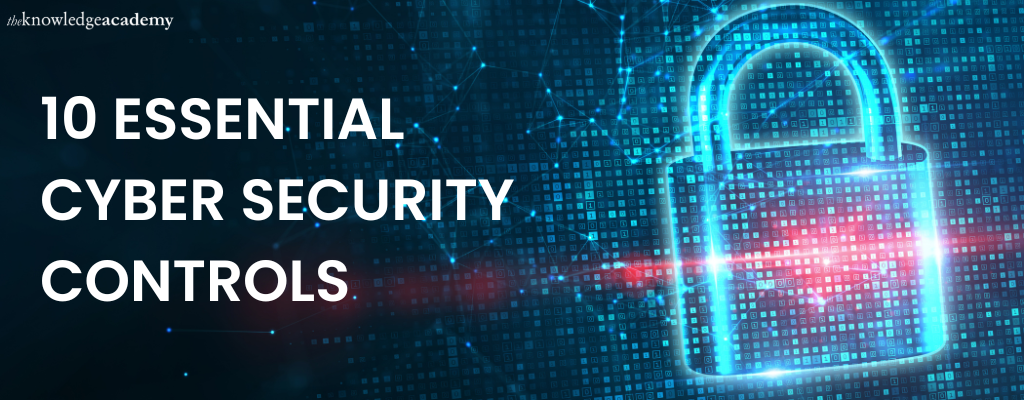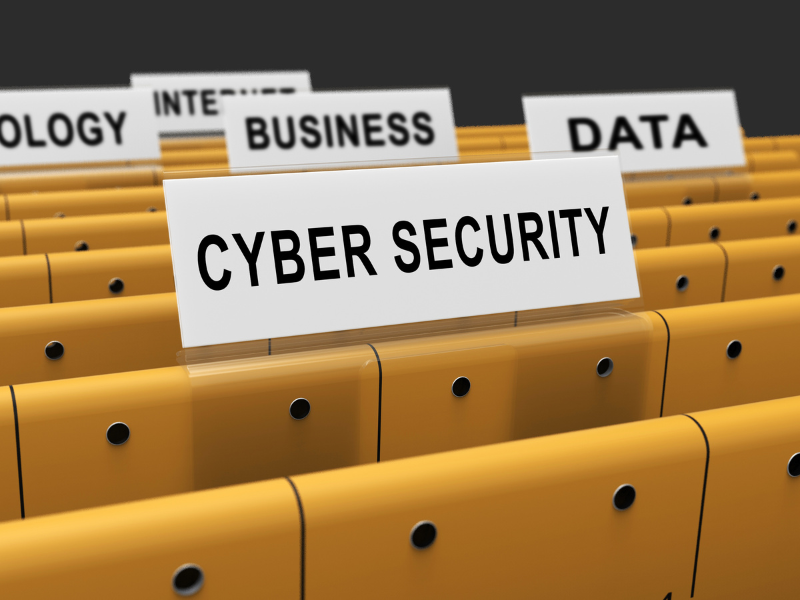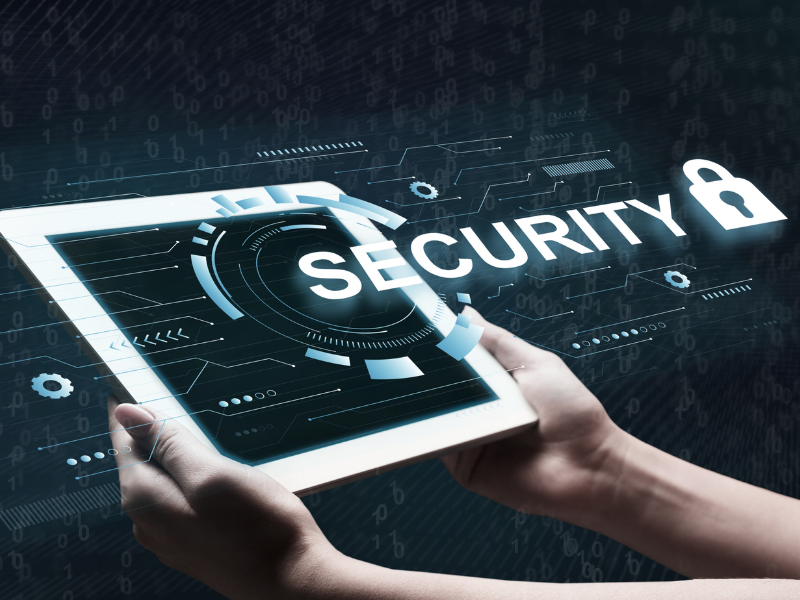We may not have the course you’re looking for. If you enquire or give us a call on 01344203999 and speak to our training experts, we may still be able to help with your training requirements.
Training Outcomes Within Your Budget!
We ensure quality, budget-alignment, and timely delivery by our expert instructors.

COVID-19 Pandemic encouraged work-from-home culture, during which employees accessed the company's network and data infrastructures to perform their tasks remotely. However, the emergence of this culture has exposed businesses to various types of cyber threats. Cyber Security strategies help in protecting the company from such risks. Several tools and control measures are used to implement the Cyber Security strategy effectively.
Cyber Security Controls form an essential part of such strategies of companies. Today, Cyber Security significantly impacts how the company protects its data and optimises its performance. Deloitte surveyed Chief Information Officers (CIOs) to find the most significant challenges. More than 40% of participants believed hybrid and IT transformation to be the biggest challenge for maintaining Cyber Security.
This blog discusses ten key Cyber Security Controls for businesses.
Table of Contents
1) What are Cyber Security Controls?
a) Multifactor Authentication (MFA)
b) Remote Desktop Protocol (RDP)
c) Backups
d) Access Controls
e) Security Culture Training
f) Email Hygiene
g) Data Protection
h) Incident Response Management
i) Patch Management Lifecycle
j) Virtual Private Network (VPN)
2) Conclusion
Want to build a career in Cyber Security? Select and join one of our extensive Cyber Security Training courses today!
What are Cyber Security Controls?

Cybersecurity Controls detect, prevent, reduce, and counteract various security risks. These are deployed to identify and manage a business organisation's threats targeting its systems and networks. These can be physically seen in the form of tools and equipment or digital tools, like antivirus software.
Following are the ten essential Cybersecurity Control measures an organisation can use in its systems:
Multifactor Authentication (MFA)
Today passwords alone are not sufficient in securing systems and networks. With an increasing rate of credential compromise attacks, it is becoming essential for companies to secure their systems to the greatest possible extent. The MFA is an authentication method in which the user has to provide more than one verification code to access the resource, like an application.
While usernames and passwords are susceptible to brute force attacks, it is difficult to steal from MFA-enabled systems. The MFA can be in the form of a fingerprint or a physical hardware key. It increases the confidence of the users in the systems and protects the IT infrastructure in a better manner.
Remote Desktop Protocol (RDP)
The RDP is a technical standard that enables the remote use of a computer. RDP is the most commonly used protocol for remotely accessing a computer, but there are many others, like Independent Computing Architecture (ICA) and Virtual Network Computing VNC).
As a result of the pandemic, the category of remote desktop solutions has grown rapidly. More people work from home and use unsecured networks to access the company's resources. Consequently, firms' systems are exposed to cyber threats.
A dedicated network channel is used in the RDP protocol for sending and receiving data between the connected machines, i.e., the remote desktop and target computers. The network port 3389 is always used for this purpose. All data on the connected devices are sent using TCP/IP, a transport protocol for internet traffic.
Backups
Companies must routinely make a backup of their data and system configurations due to an increase in the frequency of Cyber Security attacks. Despite the fact that it is a key control mechanism, it might provide the business access to data from before an attack or breach.
Majority of businesses still do not routinely back up their data. Cybercriminals use this as an opportunity to initiate threats. Because of this, firms have limited recovery capabilities. The crooks are greatly aided by this situation and can extort the businesses. Recognising the importance of Cyber Security Essentials, organisations should frequently back up their data and keep it offline to reduce the risk of losing sensitive or important data required for daily operations.
Access Controls
Companies have recently been too lenient with their access privileges. It is known that employees are the biggest weak link in the Cyber Security policy of an organisation. Employees occasionally provide hackers access to certain resources without realising it. The company's cyber security posture is weakened as a result.
Businesses should ensure staff have just the bare minimum access permissions. It could lessen the possibility of a cyberattack on the company. In this case, privileged-access management software can be useful since it ensures that only administrators and other appropriate users can access the resources.
The Cyber Security Risk Management course gives you a great opportunity to learn how the Cyber Attacks are carried out.
Security Culture Training
Today Cyber Security is an integral part of the operations of a business organisation. It is critical that companies secure their IT infrastructure and that it is not prone to cyber-attacks and threats. Nowadays, Cyber Security is not the responsibility of security professionals only. Instead, every employee in the company is responsible for maintaining the security of the firm's systems and networks. In this regard, the company has to focus on creating a strong security culture. Here the employees are to be trained to protect the data online. Regular employee training can help build a security culture and protect digital systems and networks.

Email Hygiene
Companies should train their employees to follow proper email hygiene. This entails training the employees to identify and report phishing emails. In addition, the company should also use a multi-layered defence mechanism that limits the chances of a cyberattack.
Employees should be taught to keep their email id private from unreliable websites and sources. In addition, security professionals must regularly analyse the systems and networks to identify unauthorised or malicious emails. It can help in limiting the risk of cyber-attacks on the firm.
Data Protection
This control measure requires the company to focus on protecting its data. Companies must ensure that their data is safe and cannot be accessed by a third party or a cybercriminal. To protect the data, the company must rely on using different tools and methods that safeguard the systems and information contained within the network.
Even though securing the data might not be easy, it can be of great value to the company and help ensure that its systems are safe. Data can be protected by developing technical controls that help identify, classify, securely handle, retain, and dispose of the data.
Incident Response Management
A company must create a strong management system for reporting incidents. This system is responsible for collecting and recording data.
In this measure, the company stores information about past cyberattacks. Based on this information, the management makes relevant decisions and prepares to safeguard the data and systems to the greatest possible extent.
Patch Management Lifecycle
Businesses acquire technology from different vendors to meet their requirements. However, using systems with different configurations exposes the company to threats from various sources. To combat this issue, vendors offer regular patch updates. The company must follow a strict patch management lifecycle system to streamline this process. It helps ensure that the systems and applications are updated to the latest patch as soon as possible.
Virtual Private Network (VPN)
Another way companies can secure their networks and systems is by using VPN. Using this security control measure enables firms to access the internet while keeping their systems and data safe by limiting the access cybercriminals can obtain.
However, companies should also keep in mind that cyber-attackers can use VPNs to hack into systems by hiding their actual location and other such details. In this regard, security professionals should regularly review and analyse the VPN logs to identify any suspicious activity within the systems.
Understand contemporary Cyber Threats with Cyber Security Awareness course!
Conclusion
Today's businesses invest a substantial amount of resources in protecting their data. The role of Cybersecurity is critical for organisations. After reading this blog, we hope you understand the essential Cybersecurity Control measures required by companies to safeguard their data and systems.
With the Microsoft Cybersecurity Architect SC100 learn to design a Zero trust strategy and architecture.
Frequently Asked Questions
Upcoming IT Security & Data Protection Resources Batches & Dates
Date
 Certified Cyber Security Professional (CCS-PRO)
Certified Cyber Security Professional (CCS-PRO)
Thu 1st Jan 1970







 Top Rated Course
Top Rated Course




 If you wish to make any changes to your course, please
If you wish to make any changes to your course, please


